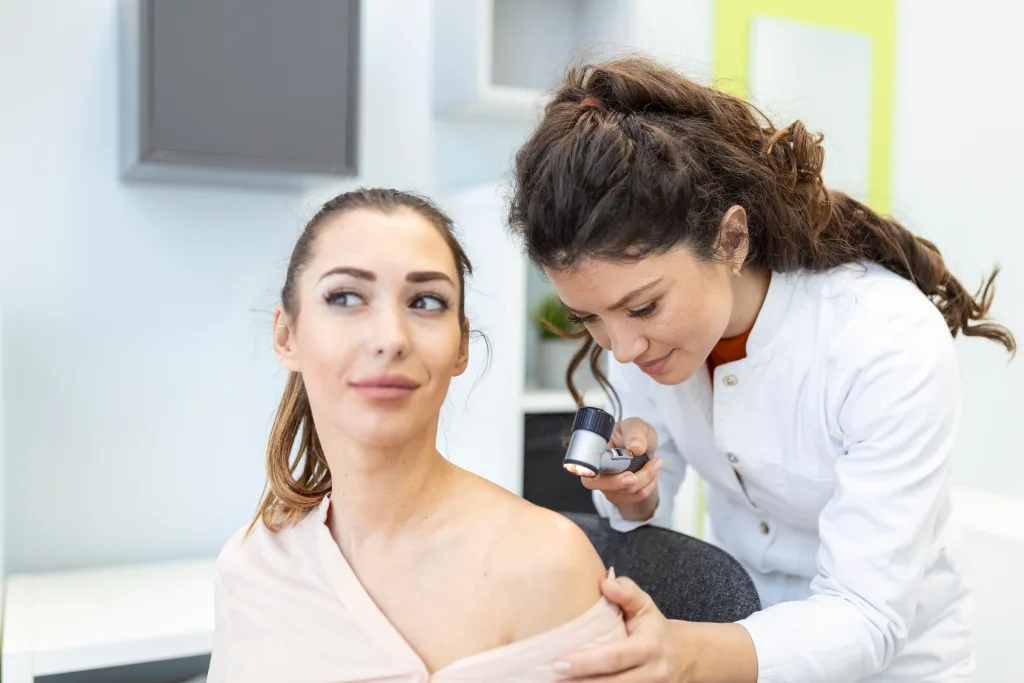
By Annette Brooks
Did you know that around one in five Americans will develop skin cancer in their lifetime and that skin cancer is the most common cancer in the United States? If you’re surprised by this, the following statistic may shock you. According to SkinCancer.org, more people are diagnosed with skin cancer each year in the county than all other cancers combined.
Skin Cancer Types
Skin cancer generally falls into two categories — non-melanomas, such as squamous and basal cell carcinoma, and melanoma. Non-melanomas are more common and usually curable, especially when diagnosed and treated early.
Melanoma is considered the deadliest form of skin cancer because it tends to spread quickly. Although it begins in the skin, melanoma can reach blood vessels and lymph systems and metastasize to other body organs. If you’re wondering where Texas fits into the melanoma landscape, it ranks third in the nation for newly diagnosed cases of melanoma.
Ways to Protect Your Skin, Lower Your Risk
Most skin cancers are caused by overexposure to ultraviolet (UV) rays from the sun, tanning beds, or sunlamps. If you didn’t avoid overexposure or use sunscreen in the past, remember that it’s never too late to start protecting your skin. And, keep in mind that reducing exposure not only helps you minimize getting skin cancer, but it can also reduce photoaging, so you stay younger-looking longer.
Avoid tanning beds. Unfortunately, the incidence of melanoma has been increasing over the past few decades. According to the NIH, melanoma incidence in the U.S. grew more than 320% between 1975 and 2018. One of the culprits is the use of tanning beds, which increases the risk of melanoma, including early-onset melanoma.
Reduce the amount of time spent in the sun. Avoid the sun between 10 a.m. and 4 p.m. When outdoors, wear sunscreen and protective clothing, including long sleeves and pants whenever possible and wide-brimmed hats. Remember to wear sunglasses to protect your eyes. According to the National Eye Institute, prolonged exposure to UV rays modifies lens proteins, leading to cataract formation and worsening eyesight.
Last but not least, apply a generous amount of sunscreen to all the exposed areas on the body 20 to 30 minutes before sun exposure. Reapply every two hours. Use a broad-spectrum sunscreen with a high sun protection factor (SPF).
Get Regular Skin Exams
Regular skin examinations aid in early detection. It’s vital to check your skin for any changes, including existing moles and the development of new moles. Your dermatologist will perform a whole-body check and may use a dermatoscope— a small, lighted magnifying instrument — to better see a particular area. Some dermatologists use advanced skin cancer imaging technologies for early detection.
Between doctor visits, perform a self-skin exam. Look closely from head to toe for any suspicious moles. Ask a friend, spouse, or partner to help you check hard-to-see areas like your back. When examining a mole, apply the ABCDE criteria. These letters stand for asymmetrical, border, color, diameter, evolving. (Visit AAD.org/public/diseases/skin-cancer/find/at-risk/abcdes for more information.) Be aware that “hidden” melanomas can develop in areas with typically little or no exposure to the sun. They include the spaces between the toes and on the palms, soles, scalp, and even genitals.
Skin Cancer Myths and Facts
Myth: Tanning beds are safe.
Fact: Tanning beds emit the same harmful UV rays as the sun and in greater amounts. More than 419,00 cases each year are linked to indoor tanning, and women younger than 30 are six times more likely to develop melanoma if they tan indoors.
Myth: I need to burn before I tan. Since I tan after a burn, it’s perfectly safe.
Fact: Your risk of melanoma doubles if you’ve had more than five sunburns.
Myth: I have a darker skin tone. I can’t get sunburned.
Fact: Some people are more prone to sunburn, but anyone can get burned, regardless of skin tone.
Myth: I have actinic keratosis, but I’m not concerned. It won’t turn into skin cancer.
Fact: Actinic keratoses are considered pre-cancer. Some of these growths may transform into skin cancer within a three-year period.
Myth: Only older people get skin cancer.
Fact: Melanoma is the most common form of cancer in young adults ages 25 to 29 and the second most common form of cancer in people 15 to 29 years old.
Read more about skin health HERE on LivingMagazine.net











